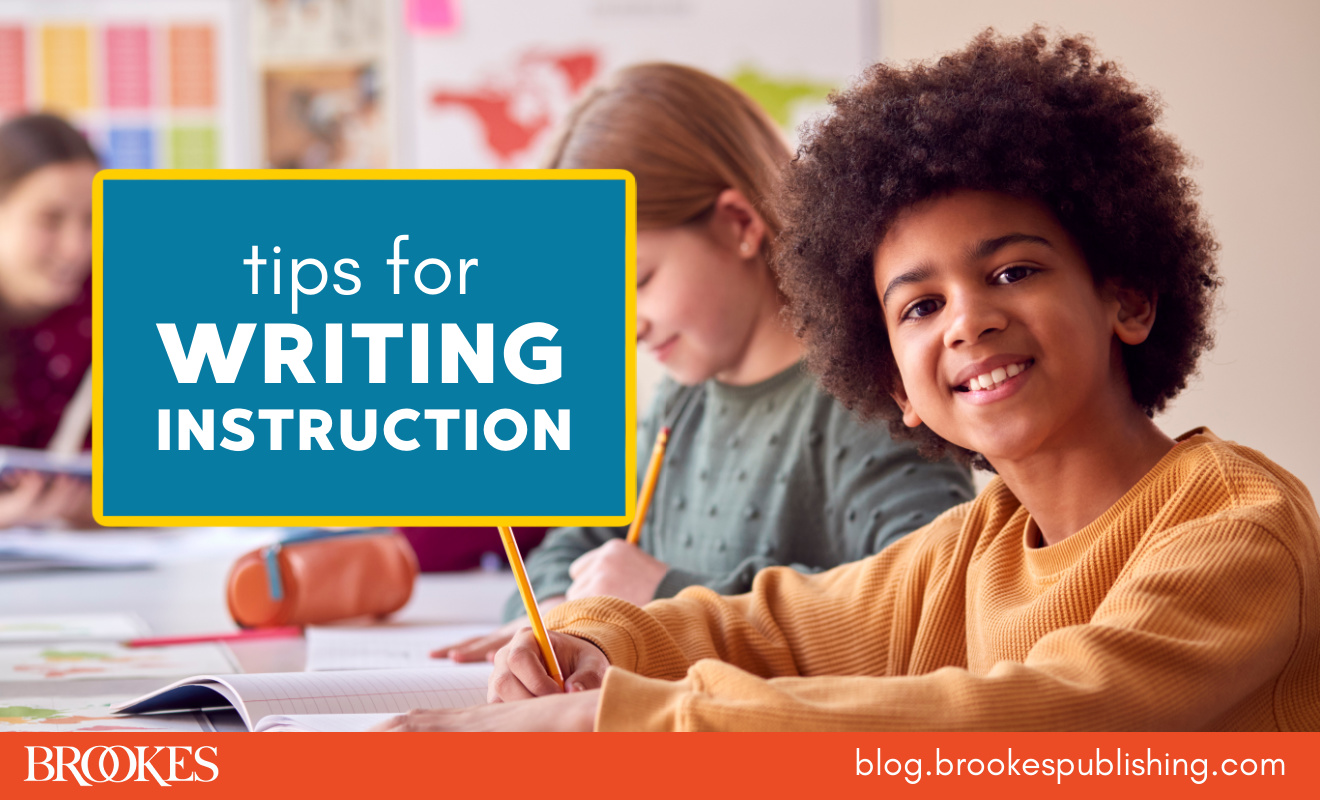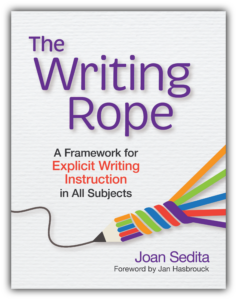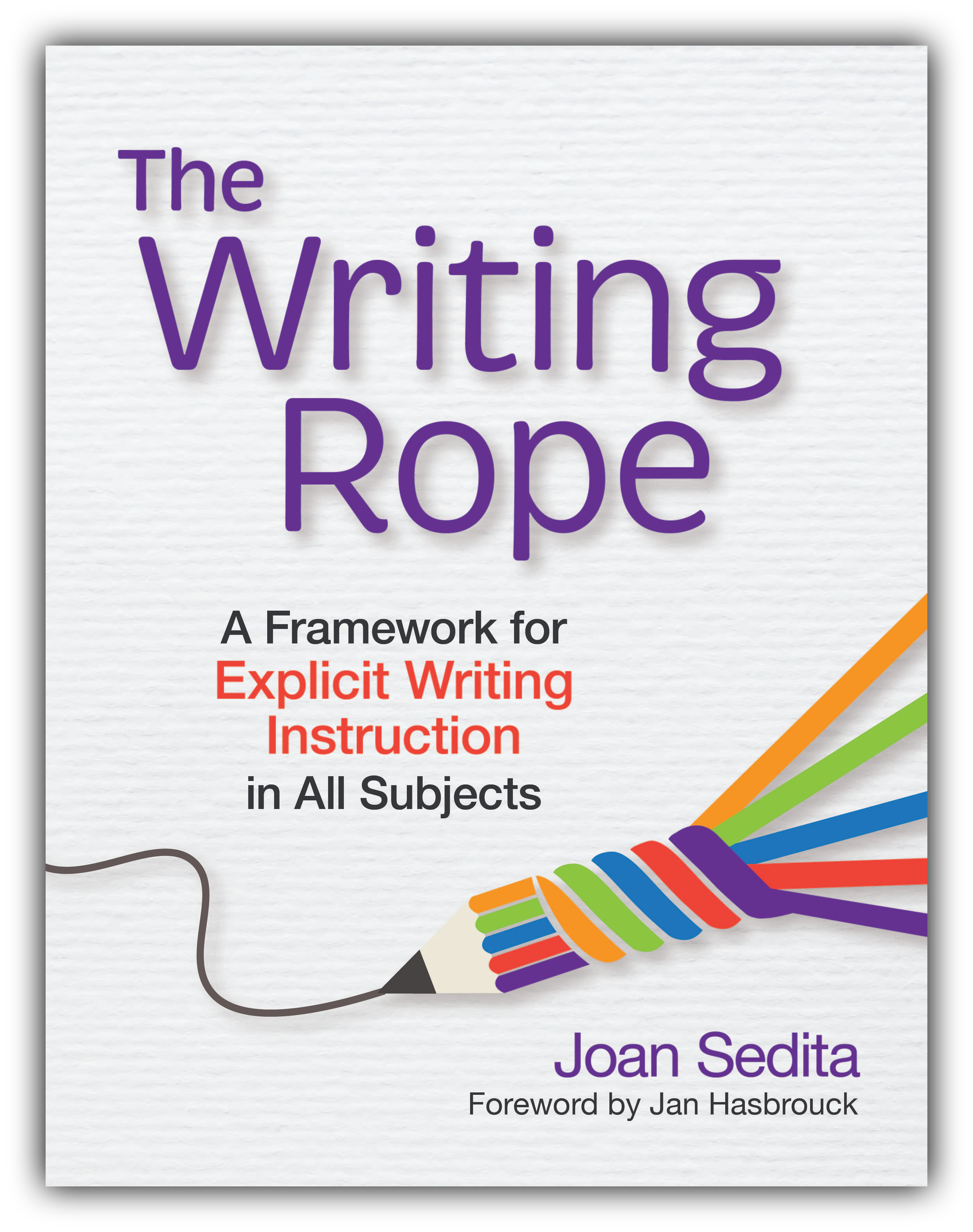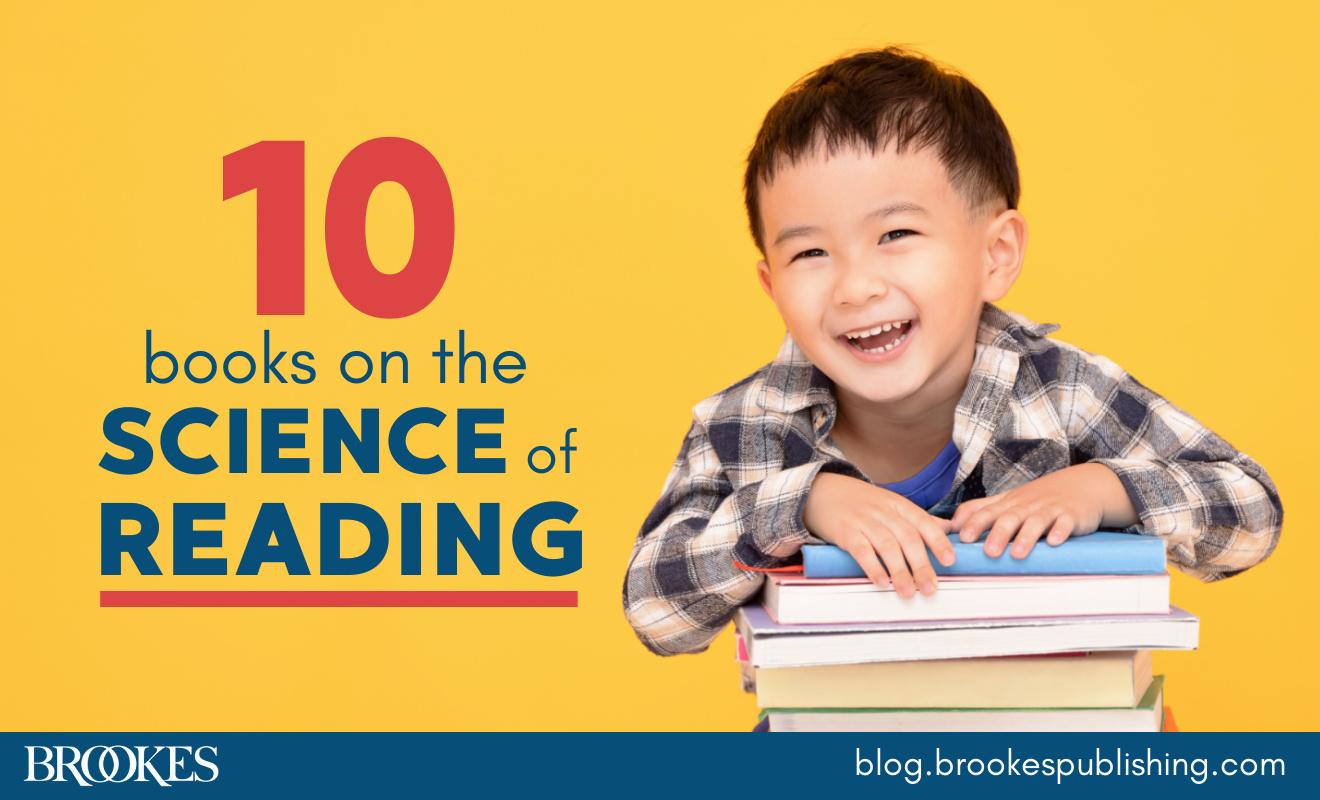Teacher Tips: How to Use Mentor Text as Student Writing Models
July 4, 2024
 *Today’s post has been adapted from Joan Sedita’s bestselling guidebook The Writing Rope.
*Today’s post has been adapted from Joan Sedita’s bestselling guidebook The Writing Rope.
Most people learn new skills—such as how to cook a meal, play basketball, or play the guitar—by emulating others. It’s the same with writing. Today, let’s look at how teachers can use writing models, or mentor text, to show students what strong writing looks like.
Mentor models help students imitate effective style, language, and structure in their own writing. They also show authors’ use of techniques associated with writing craft, also called writer’s moves. These writer’s moves include:
- Voice. Voice refers to a writer’s unique style, emotion, and personality reflected in their writing. The writer expresses voice through the choice of language used to describe action, the setting (time and place), and use of dialogue. What the writer says and how it is said will convey their voice, as well as the overall tone of the writing piece (e.g., formal, informal, friendly, assertive, optimistic).
- Narrative Point of View. The story’s vantage point might be from a character in the story, or from the writer, who sees and knows the characters but is not one of them. The point of view will be guided by the writer’s personal opinions, beliefs, and perspectives. There are three main options for point of view: first person, second person, and third person.
- Word Choice. Word choice is about the writer’s purposeful use of specific vocabulary and word placement to convey meaning and create an effect on the reader. The use of descriptive, colorful language and precise words is associated with word choice. Some students are able to incorporate varied word choice while writing a first draft, whereas others may need to examine their word choice during revision and make changes to include better words.
- Literary Devices. Literary devices, such as allegory, foreshadowing, and hyperbole, are specific techniques a writer uses to convey meaning and allow for greater understanding of the text. They highlight important concepts in the text, strengthen the story, and convey important information about characters and themes. Literary devices are sometimes referred to as adding flavor to writing.
As you teach writer’s moves, you can use mentor text broadly to teach students the difference between informational, opinion/argument, and narrative modes, and also to teach specific writing skills, strategies, and techniques. You might find it helpful to follow a routine like this one for sharing mentor text:
Choose mentor text. First, select one or more texts or parts of texts where a given writing technique, such as varying sentence length, has clearly been used. Mentor text can come from a variety of places, including books, articles, newspapers, magazines, and websites. Depending on the instructional goal, the length of a mentor text may vary from just a few sentences to a whole book.
Have them read. Set aside time for students to read the mentor text that demonstrates the technique you want to teach.
Discuss and analyze. Because many students don’t know what to look for in mentor models, they’ll need explicit instruction for analyzing a text. Lead a discussion about the technique the author used to make their writing effective so that students might emulate it. Try reading aloud portions of text and then stopping to ask how and why the author chose to use certain words, sentences, text structure, or writing techniques. Use think-alouds; for example, “When all the sentences in a writing piece are about the same length, it sounds monotonous and the reader will get bored! One technique good writers use to keep things lively is to vary sentence length. You have to mix it up a little to hold the reader’s attention. Notice how this writer includes some very short sentences as well as medium and longer ones.”
Provide a specific model for students. Model how to incorporate the technique into a piece of text as you write. For example: “This paragraph has a lot of long, detailed sentences describing plans for this elaborate birthday party, with lists of the snacks and decorations and games. Now, I’m going to tell the reader something they’re not expecting. This is a good place for a very short sentence—No one came. After all the long, detailed descriptions and build-up, a three-word sentence here makes a big impact!”
Have them practice. Give students an opportunity to use the technique in a piece of their own writing, working collaboratively with peers or independently. Some teachers express concern that mentor text will encourage students to copy language used by another author instead of generating their own wording. But as long as you’ve offered guidance on analyzing a specific writing technique and an opportunity for discussion, your students will be able to create their own, original text that incorporates their new writer’s moves.
Offer sharing time. After students complete their writing exercise to practice the technique, give them an opportunity to share and discuss their writing pieces with peers.
The Writing Rope offers more resources for using mentor text, including lists of literary devices and sensory words, a text analysis worksheet, and anchor charts to track examples of writer’s craft techniques. The book also gives teachers of Grades 4–8 much more guidance on the whole process of planning and delivering comprehensive, explicit, and evidence-based writing instruction.





Write a Comment
Your email address will not be published. Required fields are marked *
Post a Comment